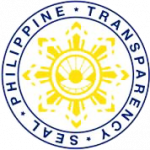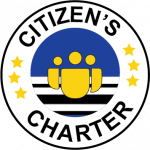- GOVPH
- About BOC
- Issuances
- Aduana Library
- Memoranda
- Memoranda for Reference Values
- Customs Administrative Order (CAO)
- Customs Administrative Order (CAO) 2025
- CUSTOMS ADMINISTRATIVE ORDER (CAO) 2024
- Customs Administrative Order (CAO) 2023
- Customs Administrative Order (CAO) 2022
- Customs Administrative Order (CAO) 2021
- Customs Administrative Order (CAO) 2020
- Customs Administrative Order (CAO) 2019
- Customs Administrative Order (CAO) 2018 and Older
- Customs Memorandum Order (CMO)
- Customs Memorandum Circular (CMC)
- Customs Memorandum Circular (CMC) 2025
- Customs Memorandum Circular (CMC) 2024
- Customs Memorandum Circular (CMC) 2023
- Customs Memorandum Circular (CMC) 2022
- Customs Memorandum Circular (CMC) 2021
- Customs Memorandum Circular (CMC) 2020
- Customs Memorandum Circular (CMC) 2019
- Customs Memorandum Circular (CMC) 2018 and Older
- Customs Special Order (CSO)
- Custom Training Circular (CTC)
- Joint Memorandum Orders (JMO)
- Trade
- News Room
- Port Updates
- HR Corner
- Quicklinks
- Infographics
- Bureau of Customs Webinar
- Auction and Sales
- Bid Opportunities
- Invitation to Bid / Request for Quotation / Invitation for Negotiated Procurement / Notice to Conduct Direct Contracting – 2023
- Invitation to Bid / Request for Quotation / Invitation for Negotiated Procurement / Notice to Conduct Direct Contracting – 2022
- Invitation to Bid / Request for Quotation / Invitation for Negotiated Procurement / Notice to Conduct Direct Contracting – 2021
- Invitation to Bid / Request for Quotation / Invitation for Negotiated Procurement / Notice to Conduct Direct Contracting – 2020
- Invitation to Bid / Request for Quotation / Invitation for Negotiated Procurement / Notice to Conduct Direct Contracting – 2019
- Invitation to Bid / Request for Quotation / Invitation for Negotiated Procurement / Notice to Conduct Direct Contracting
- Bid Documents
- Bid Supplement
- Summary of Awarded Contracts
- Summary of Contracts Awarded 2023
- Summary of Contracts Awarded 2022
- Summary of Contracts Awarded 2021
- Summary of Contracts Awarded 2020
- Summary of Contracts Awarded 2019
- Summary of Contracts Awarded 2018
- Summary of Contracts Awarded 2017
- Summary of Contracts Awarded 2016
- Summary of Contracts Awarded 2015
- Summary of Contracts Awarded 2014
- Summary of Contracts Awarded 2013
- Annual Procurement Plan
- Customs Knowledge Resources
- References
- Gender Equality and Diversity
- Philippine National Trade Repository
- Philippine Tariff Finder
- Authorized Economic Operator

Motor Vehicles, Boats & Yachts
1. CAN ANYONE IMPORT (BRING IN) A MOTOR VEHICLE?
Yes, provided that the motor vehicle is brand new.
2. WHEN IS A MOTOR VEHICLE “BRAND NEW”?
To be considered brand new, a motor vehicle must be:
- Of current or advance year model in the country of origin and/or manufacture, or
- Of year model immediately preceding year in the country of origin and/or manufacture, provided that:
- The motor vehicle has a mileage of not more than 200 kilometers; and
- The motor vehicle has been acquired by the importer from the dealer as first owner.
3. HOW ABOUT USED MOTOR VEHICLES?
Only qualified used motor vehicles are allowed for importation, and only qualified individuals may import such qualified used motor vehicles, which must be duly covered by a Certificate of Authority to Import (CAI) from the Fair Trade Enforcement Bureau (FTEB) of the Department of Trade and Industry (DTI).
The CAI must be secured before the actual importation of the used motor vehicle/s.
4. WHAT USED MOTOR VEHICLES ARE ALLOWED FOR IMPORTATION?
Under Executive Order 877-A, only the following used motor vehicles are allowed for importation:
1. Personally-owned motor vehicles, under the No-Dollar Importation (NDI) Program.
2. Motor vehicles for the use of an official of the Diplomatic Corps (authorized to be imported by the Department of Foreign Affairs).
3. Trucks with Gross Vehicular Weight (GVW) of 2.5 tons and above.
4. Buses with Gross Vehicular Weight (GVW) of 6 tons and above.
5. Special purpose vehicles.
6. Motorcycles.
“Special Purpose Vehicles (SPVs)” refers to a range of motor vehicles specially constructed or adapted, equipped with various devices that enable them to perform certain non-transport functions (i.e., fire trucks, crane lorries, mobile radiological units, mobile drilling derricks, concrete mixer lorries, etc.) or a specialized type of motor vehicles used for the transport of persons or goods (i.e., ambulances, funeral hearses, etc.).
5. WHO ARE QUALIFIED TO IMPORT USED PERSONALLY-OWNED MOTOR VEHICLES (UNDER THE NDI PROGRAM)?
The following are the individuals allowed to import one (1) used personally-owned motor vehicle:
- Returning Residents or Philippine passport holders who have resided abroad for at least 1 year (accumulated within 3-year period of their stay abroad up to the date of filing of the application for CAI).
- Immigrants holding 13g or 13a visa or Dual Citizens.
- Special Resident Retiree’s (SRR) Visa holders under the Philippine Retirement Act.
- 47(a)(2) Visa holders under the Balik-Scientist Program.
6. ARE THERE RESTRICTIONS ON THE PERSONALLY-OWNED MOTOR VEHICLE THAT IS ALLOWED (UNDER THE NDI PROGRAM)?
Yes. The personally-owned motor vehicle must:
- Be a Left Hand Drive
- Have a Gross Vehicular Weight (GVW) not exceeding 3,000 kilograms (3 tons),
- Be registered under the name of the qualified importer for at least six (6) months prior to the submission of the application for CAI, and
- Have a Certificate of Roadworthiness and Emission Compliance (CREC) from country of origin duly authenticated by the Philippine Embassy abroad (under RA 8749).
7. WHAT OTHER RESTRICTIONS MUST BE COMPLIED WITH WHEN IMPORTING A PERSONALLY-OWNED MOTOR VEHICLE (UNDER THE NDI PROGRAM)?
Other conditions are as follows:
- Only one (1) motor vehicle shall be allowed per family (composed of the husband, wife and unemancipated minor children), and the program can be availed of only once.
- The motor vehicle is for personal use, and cannot be resold for at least three (3) years.
- Personal appearance of applicant at the FTEB is required prior to the release of the motor vehicle from Bureau of Customs.
8. ARE THERE RESTRICTIONS ON USED TRUCKS, BUSES AND SPECIAL PURPOSE VEHICLES?
Yes. Only the following are allowed for importation:
- Left Hand Drive (LHD) vehicles, and
- Those with qualified GVWs (not applicable to special purpose vehicles).
9. IS THE IMPORTED MOTOR VEHICLE SUBJECT TO PAYMENT OF CUSTOMS DUTIES AND TAXES?
Yes. Whether brand-new or used, the imported motor vehicle is subject to payment of customs duties, taxes and other charges, as follows:
1. Customs Duty. This is based on the Dutiable Value (DV) of the imported vehicle. The duty rate depends on the type of the vehicle. For automobiles, the applicable rate is either 20% (for 10-seater or above) or 30% (for 9-seater or below).
2. Ad Valorem Tax (AVT). This is applicable only to automobiles. The rate is generally based on the Landed Cost (LC), except brand new automobiles consigned to car dealers/manufacturers. Revenue Regulation 25-2003, as amended by Revenue Regulation 05-2018, provides for the schedule of automobile AVT rates.
3. Value Added Tax (VAT). For automobiles, the rate is 12% based on the sum of the Landed Cost (LC) and the Ad Valorem Tax (AVT). For other vehicles, the rate is 12% based on the Landed Cost (LC).
4. Import Processing Fee (IPF). IPF rates range from PHP 250 to PHP 1,000 (depending on the DV).
5. Documentary Stamp Fee (DSF). DSF rate is fixed at PHP 265.
6. Container Security Fee. This is applicable if the imported vehicle is containerized. CSF rate is the peso-equivalent of USD 5 (for 20-footer) or USD 10 (for 40-footer).
7. Certificate of Payment Fee (CPF). CPF rate is fixed at PHP 100.
10. ARE SPARE PARTS SENT WITH THE MOTOR VEHICLE ALSO TAXABLE?
Yes. These are taxed separately.
11. HOW CAN WE INQUIRE ABOUT THE DUTIES AND TAXES PAYABLE?
You may inquire about the duties and taxes payable by sending an e-mail at boc.cares@customs.gov.ph. We will provide estimated duties and taxes based on the details you have sent.
12. ARE THERE OTHER CHARGES DUE ASIDE FROM CUSTOMS DUTIES AND TAXES?
Yes. There are non-customs charges which may be due on the imported vehicle such as but not limited to:
1. Arrastre charges, payable to the arrastre/port operator.
2. Storage fees and Wharfage dues, payable to the Philippine Ports Authoriy (PPA).
3. Brokerage Fees, payable to the nominated customs broker.
13. HOW IMPORTANT IS THE CERTIFICATE OF AUTHORITY TO IMPORT (CAI)?
It is very important if the motor vehicle does not qualify as “brand new”. A used motor vehicle not covered by a CAI shall be seized and may only be released upon payment of heavy penalties (fine) on top of the duties and taxes due thereon.
14. HOW IS CAI OBTAINED?
A CAI may be obtained by submitting the complete documentary requirements to the FTEB.
For personally-owned motor vehicles under the NDI Program, the general documentary requirements are as follows:
1. Completely filled-out and notarized FTEB Application Form,
2. Completely filled-out and notarized Affidavit of Undertaking,
3. 1 copy of 2×2 picture with signature,
4. Picture of the motor vehicle,
5. Original or authenticated copy of Car Title or Registration, with English translation (if necessary), and
6. Processing fee of One Thousand Five Hundred Pesos (PHP 1,500) for cars and Nine Hundred Pesos (PHP 900) for motorcycles.
For trucks, buses and special purpose vehicles, the documentary requirements are as follows:
1. Completely filled-out and notarized FTEB Application Form,
2. Completely filled-out and notarized Affidavit of Undertaking,
3. Original Pro-forma Invoice and photocopy,
4. Business Name if Single Proprietorship/Partnership or SEC if Corporation (for new applicant only), and
5. Original or Authenticated copy of Certificate of Roadworthiness and Emission Compliance (CREC).
15. ARE THERE SPECIFIC (ADDITIONAL) DOCUMENTARY REQUIREMENTS FOR EACH QUALIFIED IMPORTER UNDER THE NDI PROGRAM?
Yes. The specific (additional) documentary requirements are as follows:
— For Philippine Passport holders, original or authenticated copy of pages with entries of both old and new passport.
— For Dual Citizens, (1) Original or authenticated copy of Philippine and Foreign passport, and (2) Original or authenticated copy of Identification Certificate or Oath of Allegiance issued by the Bureau of Immigration or Philippine Consulate/Embassy in lieu of a Philippine passport.
— For Foreign Passport Holders (13A & 13G visa Holders), (1) Original or authenticated copy of passport, stamped with a valid 13A or 13G visa, and (2) Immigrant Card (I-card).
— For Foreigners under the Philippine Retirement Act (SRR Visa holders), original or authenticated copy of passport, stamped with a valid SRR visa.
— For Filipinos/Foreigners of Filipino Descent under the Balik-Scientist Program (47A2 Visa holders), original or authenticated copy of passport, stamped with a valid 47A2 visa.
16. WHERE IS FTEB LOCATED?
FTEB is located at 1-2F UPRC Building 315 Sen. Gil J. Puyat Ave., Makati City.
FTEB may be contacted through the following:
Telephone number– (+632) 811 8231 or (+632) 403 1417
Email address– FTEB@dti.gov.ph or fteb_ird@dti.gov.ph
17. IS DEPRECIATION IN VALUE ACCORDED TO IMPORTED USED MOTOR VEHICLES?
Yes. For used motor vehicles under the NDI Program, the rates of depreciation shall follow the schedule (as prescribed under CAO 07-2014) shown on the table below:
DEPRECIATION TABLE (Straight Line Method) |
|
| Automobile Year Model | Allocated Depreciation |
| Current Year | 0% |
| 1 year old | 10% |
| 2 years old | 20% |
| 3 years old | 30% |
| 4 years old | 40% |
| 5 years old, or older | 50% |
For used trucks and heavy equipment, the rates of depreciation shall follow the Straight Line Method at ten percent (10%) per year but in no case shall it exceed ninety percent (90%).
18. IS THE IMPORTATION OF BOATS AND YACTHS ALLOWED?
Yes, provided that the importation is covered by an Import Permit from the Maritime Industry Authority (MARINA).
(Source: Executive Order 877-A s.2010; CMTA/AHTN; Revenue Regulation 25-2003, as amended by Revenue Regulation 05-2018; CAO 07-2014; www.dti.gov.ph)
ABOUT GOVPH
All content is in the public domain unless otherwise stated.






